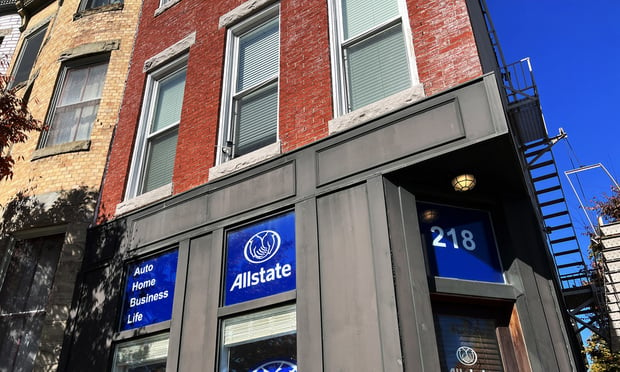In an ideal world, every property and business owner would have a disaster recovery plan to ensure a straightforward restoration. The truth is that, even with a plan of action, multiple unexpected issues must be resolved in the midst of chaos and confusion. Valuable days and even weeks can be required for restoration, particularly if other complications, such as forensic investigations, arise.
All parties feel the growing sense of urgency when reconstruction finally begins and the pressure is on to perform the work in record time. Such was the case for the Belfor reconstruction project at the Cook County Administrative Building following a fire in October 2003.
It is a story that everyone has heard. At 5 pm on Friday, Oct. 17, a fire started on the 12th floor of the Administrative Building in downtown Chicago. A few hours later, when the fire subsided, six people had died, trapped in a smoke-filled stairwell, and a number of people had been injured.
The insurance adjuster, Gil Tognarelli, was on the scene early Saturday morning for a first-hand look at the damage. Due to severe water and smoke damage, the building was unusable. The 12th floor had been completely destroyed, floors four through 11 had experienced extensive water damage, and smoke damage on floors 14 through 35 had left 2,500 people without offices.
Cook County contracted an emergency response company to perform the remediation.
Resolving Issues
In the days immediately following the fire, the scramble began to locate temporary office space around the city. Structural drying was undertaken, and estimates and schedules for the restoration that all the parties could agree upon were secured.
Several investigations of the fire were initiated at various state, county, and city levels. Every fire must be investigated thoroughly, and one involving fatalities and injuries requires in-depth forensic investigation.
Belfor was brought in as consultants, to provide an estimate for the 12th floor demolition and the painting of the building's exterior, according to Dave Cripe, CPCU, general manager of Belfor USA's Northbrook, Ill., office The company then was asked to assemble an estimate on the rebuilding of floors four through 35.
Weeks seemed to pass with little progress. By late November, no firm decisions had been made about who would perform the rebuilding or what the schedule would be. Cook County was under pressure to get several high-profile clients back into their offices, and the insurance company was determining a cost-effective schedule.
Then, like many events in this business, everything suddenly shifted into high gear, and the decisions came hard and fast. “The 12th floor was released as an investigation scene, and we were immediately asked to perform the demolition and cleaning,” Cripe said. “During the demo project, Cook County told us on a Friday to begin the rebuild of floors four through six on the following Monday.”
As a result of the delays, it was no ordinary restoration project. “It was a very tight schedule, almost unrealistic,” said Tognarelli. The timetable called for 198,000 square feet to be rebuilt within 60 days.
The bulk of the project was broken down into two phases. Phase One allowed 30 days for the rebuilding of floors four through six, with approximately 22,000 square feet per floor. Overtime was allowed so, although the project would be a challenge, it was not as demanding as Phase Two. The goal for that phase was to complete floors seven through 11 within 40 days. Although the floors encompassed the same square footage, the damage was twice as extensive, and no overtime was to be allowed.
Day By Day
Cripe chose project manager/estimator, Matt Endre, to be the senior project manager, calling him back from celebrating the birth of his first child. “We definitely hit the ground running,” Endre said. “We immediately divided the day into two 10-hour shifts that ran from 6 am to 4 pm, and from 4 pm to 2 am, pretty close to around the clock.”
At any given time, well over 100 workmen were on site: plasterers, painters, electricians, ceiling and grid installers, and carpet installers. In addition, 60 movers shifted contents around, working on multiple floors at the same time. Two field supervisors reported to Endre, keeping him aware of what was happening.
“Our schedule was day-by-day, therefore we had to adhere to it very closely if we were going to make that deadline,” Endre said. “It involved very careful monitoring of the whole process.”
The rebuilding crew also had to work around the company chosen by the building owners to install a fire protection system, as well as accommodate other contractors performing electronic and content restoration.
Phase One was completed on schedule. Although Christmas and New Year's fell between the two phases, much of what would have been family time was devoted to planning the Phase Two strategy. Because Phase Two allowed no overtime, Endre and his field supervisors shifted from a day-by-day schedule to an hourly increment schedule.
“We increased the number of personnel by 20 percent, but we only had one eight-hour shift per day,” said Endre. “We had to keep even closer tabs on what everyone was getting done, so we set four-hour goals.”
In practical terms, this meant that, every four hours, they had to review what goals had been met and, if they had not, reschedule the work to avoid overtime. With large crews spread out over three and four floors, this was a major effort.
“Talk about living in the moment,” Endre said. “That's exactly what we were doing. We didn't have time to worry about the next day because we were too busy meeting our next hourly goal.”
Through expert project management and a lot of hard work by very skilled people, Phase Two was completed two days ahead of schedule and $125,000 under budget. “We were very pleased with the results,” Endre reflects. “And I think if we'd had the energy we would've celebrated, but we were all pretty much exhausted after weeks of very long days. So, instead, I went home and took a nap with my two-month-old son.”
Elizabeth Raffel is a freelance writer based in Lafayette, La. Contact Dave Cripe, CPCU, General Manager, Belfor, 847-205-0580.
Want to continue reading?
Become a Free PropertyCasualty360 Digital Reader
Your access to unlimited PropertyCasualty360 content isn’t changing.
Once you are an ALM digital member, you’ll receive:
- Breaking insurance news and analysis, on-site and via our newsletters and custom alerts
- Weekly Insurance Speak podcast featuring exclusive interviews with industry leaders
- Educational webcasts, white papers, and ebooks from industry thought leaders
- Critical converage of the employee benefits and financial advisory markets on our other ALM sites, BenefitsPRO and ThinkAdvisor
Already have an account? Sign In Now
© 2025 ALM Global, LLC, All Rights Reserved. Request academic re-use from www.copyright.com. All other uses, submit a request to [email protected]. For more information visit Asset & Logo Licensing.








